Drop Database Postgres Command Line
The drop database command is a powerful tool in PostgreSQL that allows users to delete an entire database and all its associated objects. This command permanently removes all data stored in the database, making it extremely important to use with caution. This article will provide a comprehensive overview of the drop database command in PostgreSQL, including its syntax, usage, safety precautions, impact on active connections, reversal possibilities, automation, recovery options, and best practices.
Syntax and Basic Usage of the Drop Database Command
The syntax for the drop database command in PostgreSQL is straightforward:
DROP DATABASE [IF EXISTS] name;
The “IF EXISTS” clause is optional and allows the command to execute successfully even if the specified database does not exist. This can be useful to avoid error messages when attempting to drop a non-existent database.
To drop a database named “mydatabase,” the following command can be used:
DROP DATABASE mydatabase;
Safety Precautions and Considerations Before Using the Command
Before executing the drop database command, it is crucial to consider the following safety precautions:
1. Backup: Ensure that a recent backup of the database exists in case it needs to be restored.
2. Data Retrieval: Verify that all essential data has been properly backed up and is accessible, as the drop database command permanently deletes all data.
3. Permissions: Make sure that the user executing the command has the necessary privileges to drop the database. Typically, this requires superuser or database owner permissions.
4. Associated Objects: Take note of any objects associated with the database, such as tables, views, or functions, as they will also be deleted.
Dropping a Database with Active Connections: Impacting Factors and Solutions
By default, PostgreSQL does not allow dropping a database with active connections. This is to prevent accidental data loss due to ongoing activities. However, the behavior can be modified using the “FORCE” option in the drop database command.
When attempting to drop a database with active connections, PostgreSQL will return an error message indicating that the database is currently being accessed. To overcome this, you can either disconnect all active connections manually or use the FORCE option to terminate the connections automatically and proceed with the deletion. It is important to note that forcefully terminating connections may result in data corruption or loss, so exercise caution when using this option.
Reversing a Drop Database Command: Is It Possible?
Once a database is dropped using the drop database command, it cannot be reversed. The deletion is irreversible, and all data associated with the database will be permanently lost. This is why it is crucial to have backups in place before executing such a command.
Automating Database Deletion with Scripts or Queries
To automate the process of deleting a database in PostgreSQL, scripts or queries can be utilized. By writing a script that incorporates the drop database command, multiple databases can be deleted simultaneously or sequentially. This can be particularly useful in scenarios where regular database cleanup is required or when deploying test environments that need to be created and destroyed frequently.
Recovering a Dropped Database: Options and Limitations
In the unfortunate event of a database being dropped unintentionally, PostgreSQL offers several options for recovery:
1. Backup: If a recent backup exists, it can be used to restore the dropped database. However, this will only recover the database up to the point of the last backup. Any data added after the backup will be lost unless there are transaction logs available for recovery.
2. Point-in-Time Recovery (PITR): If the database is configured for PITR, it is possible to restore the dropped database to a specific point in time using archived transaction logs. This method allows for more granular recovery by capturing changes made after the last backup.
3. Third-Party Tools: There are third-party tools available that specialize in database recovery. These tools offer advanced features and options for recovering dropped databases, such as data forensics and logical extraction.
Best Practices for Using the Drop Database Command in PostgreSQL
To ensure the safe and effective usage of the drop database command in PostgreSQL, consider the following best practices:
1. Comprehensive Testing: Always test the drop database command in a non-production environment before executing it in a live environment. This will help identify any unforeseen consequences or issues.
2. Regular Backups: Implement a regular backup strategy to ensure that recent data can be restored if necessary.
3. Permissions Management: Limit the number of users with superuser or database owner privileges to minimize the risk of accidental database deletion.
4. Document Changes: Keep a record of all database changes, including deletions, to aid in troubleshooting or recovery.
Frequently Asked Questions
Q: Can I drop the currently open database using the drop database command?
A: No, PostgreSQL does not allow dropping the currently open database. You must switch to a different database or terminate all active connections before executing the drop database command.
Q: How do I create a database named “postgres” after dropping it?
A: You can create a database named “postgres” with the following command: CREATE DATABASE postgres;
Q: What is the difference between “drop database postgres” and “drop database postgres force”?
A: The “drop database postgres” command will fail if there are active connections to the “postgres” database. On the other hand, “drop database postgres force” will automatically terminate the active connections and proceed with the deletion.
Q: How can I drop a specific table in PostgreSQL?
A: To drop a specific table, use the drop table command followed by the table name. For example, to drop a table named “mytable,” use the following command: DROP TABLE mytable;
Q: Is it possible to rename the “postgres” database?
A: Yes, you can rename the “postgres” database using the RENAME command. For example, to rename the “postgres” database to “mydatabase,” use the following command: RENAME DATABASE postgres TO mydatabase;
Q: How can I restore a dropped database in PostgreSQL?
A: If a recent backup exists, it can be used to restore the dropped database. Alternatively, if the database is configured for Point-in-Time Recovery (PITR), archived transaction logs can be used to recover the database to a specific point in time.
Q: Can the drop database command be executed from the command line interface?
A: Yes, the drop database command can be executed from the command line interface by connecting to PostgreSQL and executing the command in the SQL prompt.
In conclusion, the drop database command in PostgreSQL is a powerful tool that should be used with caution. Understanding its syntax, safety precautions, impact on active connections, recovery options, and best practices is essential for effectively managing databases in PostgreSQL. By following these guidelines, users can minimize the risk of data loss and ensure the smooth operation of their PostgreSQL environments.
How To Backup, Create, Restore And Drop Postgres Databases Through Commands On Terminal
How To Drop Database Table In Postgresql?
PostgreSQL is an open-source relational database management system known for its robustness and extensive features. As with any database system, managing database tables is an essential aspect of PostgreSQL administration. Dropping a database table is a common operation performed to remove unnecessary or obsolete tables. In this article, we will delve into the process of dropping database tables in PostgreSQL, exploring different methods and offering a comprehensive guide. Additionally, we will address some frequently asked questions regarding PostgreSQL’s table management.
The Process of Dropping a Database Table
Dropping a database table in PostgreSQL involves executing a DROP TABLE statement. It is important to note that this operation permanently removes the table and all associated data, so exercise caution when dropping a table as the data cannot be recovered without a backup.
To drop a table, you must have the necessary privileges. By default, only the table owner and superusers have the necessary permissions to drop a table. Other roles or users may require the DROP privilege on the specific table to drop it successfully.
Method 1: Using the DROP TABLE Command
The simplest way to drop a database table in PostgreSQL is by using the DROP TABLE command. This command allows you to drop one or multiple tables at once. The syntax for dropping a single table is as follows:
“`
DROP TABLE table_name;
“`
Replace “table_name” with the actual name of the table you want to drop.
To drop multiple tables simultaneously, you can provide a comma-separated list of table names within the DROP TABLE command, like this:
“`
DROP TABLE table_name1, table_name2, …;
“`
Method 2: Using the DROP TABLE IF EXISTS Command
Sometimes, you may want to avoid an error if the table you intend to drop doesn’t exist. In such cases, you can use the DROP TABLE IF EXISTS command. This command ensures that an error is not thrown if the table does not exist. The syntax for dropping a table using this command is similar to the previous method:
“`
DROP TABLE IF EXISTS table_name;
“`
Again, replace “table_name” with the appropriate table name.
Method 3: Using the pgAdmin GUI Interface
If you prefer a graphical user interface, the pgAdmin tool offers an intuitive way to interact with your PostgreSQL database. To drop a table using pgAdmin, follow these steps:
1. Open pgAdmin and connect to your PostgreSQL server.
2. Navigate to the database containing the table you want to drop.
3. Expand the database tree and go to the “Tables” folder.
4. Locate the table you wish to drop, right-click it, and select the “Delete/Drop” option.
5. Confirm the deletion by clicking “Yes” when prompted.
Using pgAdmin is especially beneficial for those who prefer visual interfaces and want to avoid writing SQL commands.
FAQs
Q: Can I recover a dropped table in PostgreSQL?
A: No, the DROP TABLE command permanently removes the table and its data. To recover a dropped table, you must restore from a previous backup.
Q: What happens if a table being dropped is referenced by other tables?
A: PostgreSQL has a feature called cascading delete. If a table being dropped is referenced by other tables with foreign key constraints, you can use the CASCADE option to automatically drop all dependent objects, such as other tables or views that reference the table being dropped.
Q: How can I drop a table from a specific schema?
A: To drop a table from a specific schema, you can prefix the table name with the schema name followed by a dot. For example, to drop a table named “my_table” from the schema “my_schema”, you would use the following command: DROP TABLE my_schema.my_table;
Q: What permissions are required to drop a table?
A: By default, only the table owner and superusers have the necessary permissions to drop a table. Other roles or users may require the DROP privilege on the specific table to drop it successfully.
Q: Is there a way to drop all tables in a database at once?
A: Yes, you can drop all tables in a database at once by using the CASCADE keyword with the DROP SCHEMA command. This will remove the schema and all of its objects, including tables.
In conclusion, dropping a database table in PostgreSQL is a straightforward process that can be achieved using SQL commands or a visual interface like pgAdmin. Remember to exercise caution as dropped tables and their data cannot be recovered without a backup. Having a clear understanding of the PostgreSQL’s table management features empowers you to efficiently manage your database tables and ensure data integrity.
What Is Drop Command For Postgresql?
PostgreSQL, often referred to as Postgres, is a powerful open-source relational database management system that offers a wide range of features and flexibility. One crucial aspect of managing a database is the ability to manipulate and control the database objects, such as tables, views, indexes, and schemas. In PostgreSQL, the DROP command plays a vital role in this process.
The DROP command in PostgreSQL is used to remove or delete various database objects from the database. It allows users to delete tables, views, indexes, sequences, functions, triggers, schemas, and databases themselves. The versatility of the DROP command makes it a handy tool for database administrators and developers.
The syntax for the DROP command varies depending on the object being removed. In general, the basic format of the drop command is:
“`
DROP OBJECT_TYPE IF EXISTS object_name;
“`
Here, OBJECT_TYPE represents the type of object being removed (e.g., TABLE, VIEW, INDEX), and object_name is the name of the object being dropped. The IF EXISTS clause is optional and allows the command to skip an error if the object does not exist.
Let’s explore some examples of using the DROP command for different database objects:
1. Dropping a Table:
Suppose we have a table called customers that we want to remove. To drop this table, we use the following command:
“`
DROP TABLE IF EXISTS customers;
“`
The IF EXISTS clause ensures that the command does not throw an error if the table doesn’t exist.
2. Dropping an Index:
If we want to drop an index, we need to specify the index name in the DROP command. For example, consider that we have an index named idx_customers_name on the customers table. The drop command for this index would be:
“`
DROP INDEX IF EXISTS idx_customers_name;
“`
3. Dropping a Schema:
To drop a schema, we use the DROP SCHEMA command. For example, let’s say we have a schema named my_schema that we wish to remove. The command would look like this:
“`
DROP SCHEMA IF EXISTS my_schema;
“`
4. Dropping a Database:
The DROP DATABASE command is used to delete an entire database in PostgreSQL. The syntax for dropping a database is:
“`
DROP DATABASE IF EXISTS database_name;
“`
This command permanently removes the database from the PostgreSQL server. Be cautious when using the DROP DATABASE command, as it cannot be undone.
Frequently Asked Questions (FAQs):
Q1. Can I recover a dropped object in PostgreSQL?
A1. No, dropping an object using the DROP command in PostgreSQL is permanent. Once an object is dropped, it cannot be recovered, unless you have a backup of the database.
Q2. What happens if I try to drop a non-existing object?
A2. If you attempt to drop an object that doesn’t exist, PostgreSQL will throw an error unless you use the IF EXISTS clause. Including this clause allows the command to execute without error if the object is not found.
Q3. Can I drop multiple objects using a single DROP command?
A3. Yes, it is possible to drop multiple objects at once in PostgreSQL. You can list the object names separated by commas after the DROP command, or you can execute multiple DROP commands in a single transaction.
Q4. Do I have to specify the object type when dropping an object?
A4. Yes, PostgreSQL requires you to specify the object type when using the DROP command. This ensures that the command is directed to the correct type of object.
Q5. Are there any permissions required to use the DROP command?
A5. Yes, the user executing the DROP command must have the necessary permissions to drop the specified object. By default, only the owner of the object or a superuser can drop it. Other users need appropriate privileges granted to them.
In conclusion, the DROP command in PostgreSQL is a powerful tool for removing database objects. It provides flexibility and control over managing the database structure. However, caution should be exercised while using this command as it permanently deletes the objects. Always backup your data before dropping important objects, and double-check your commands to prevent unintended deletions.
Keywords searched by users: drop database postgres command line DROP DATABASE postgres, Cannot drop the currently open database, Create database postgres, DROP DATABASE postgres FORCE, Create database postgres command, DROP TABLE postgres, RENAME database postgres, Restore database postgres
Categories: Top 57 Drop Database Postgres Command Line
See more here: nhanvietluanvan.com
Drop Database Postgres
Understanding DROP DATABASE postgres:
The DROP DATABASE command is primarily used to remove a database from a PostgreSQL server. When executed, it permanently deletes all data, tables, views, indexes, functions, and other database objects associated with the specified database.
Syntax:
The syntax for DROP DATABASE in PostgreSQL is as follows:
DROP DATABASE [IF EXISTS] name;
Here, ‘name’ represents the name of the database to be dropped. The ‘IF EXISTS’ clause is optional, and if specified, it allows the command to proceed without throwing an error if the database doesn’t exist.
Usage:
Before using the DROP DATABASE postgres command, it is crucial to be cautious as it permanently erases all data and cannot be undone. The command requires the superuser or the owner of the database to execute it successfully.
To execute the DROP DATABASE command, you can use any Postgres client tool like psql or pgAdmin. For example, to drop a database named “mydatabase,” the command would be:
DROP DATABASE mydatabase;
Consequences and Considerations:
1. Irreversible Deletion: It’s essential to understand that executing the DROP DATABASE postgres command leads to the irreversible deletion of the specified database and all related objects. Therefore, it is crucial to double-check the database name and have appropriate backups before proceeding.
2. User Connections: PostgreSQL ensures that no users are connected to the database before dropping it. If there are active connections, the command will throw an error, and the database will not be dropped. To drop a database with active connections, you need to terminate those connections first using the pg_terminate_backend() function or by restarting the server.
3. Permissions and Ownership: Only the owner of a database or a superuser can execute the DROP DATABASE command successfully. The owner must have the necessary privileges on the target database. If you encounter any permission-related issues, ensure that you’re either the owner or have the appropriate superuser privileges.
4. CASCADE: By default, if a database being dropped contains objects such as tables, views, or functions, the DROP DATABASE command will fail. However, the CASCADE option allows deletion even if dependent objects exist. In such cases, all dependent objects are dropped automatically. It’s essential to exercise caution while using the CASCADE option, as it can lead to the loss of valuable data and objects.
FAQs:
Q1. Can I recover a database after executing the DROP DATABASE postgres command?
A1. No, the DROP DATABASE command permanently deletes the specified database and its associated objects. It is advised to have frequent backups to avoid data loss.
Q2. How can I check the list of existing databases in PostgreSQL?
A2. To list all existing databases, you can execute the \l command in psql or refer to the “pg_database” system catalog table.
Q3. Is it possible to prevent accidental execution of the DROP DATABASE command?
A3. Yes, you can set up safeguards by implementing user permissions and additional confirmation steps within your database management processes.
Q4. What happens to the other users connected to a database being dropped?
A4. PostgreSQL ensures that no users are connected to the database before dropping it. Active connections need to be terminated before dropping the database.
Q5. Can I drop the current database in use?
A5. No, it is not possible to drop the database currently in use. You need to switch to a different database before executing the DROP DATABASE command.
Conclusion:
The DROP DATABASE postgres command is a powerful tool in PostgreSQL that enables database administrators to permanently delete databases. While this command offers flexibility and convenience, it demands careful consideration due to its irreversible nature. Understanding the implications, permissions, and usage considerations associated with this command is crucial to prevent any unintended data loss. Always have proper backups and exercise caution when using the DROP DATABASE postgres command.
Cannot Drop The Currently Open Database
Introduction:
In the world of database management, there are situations when you may encounter an error message that says “Cannot drop the currently open database”. This error occurs when attempting to remove or delete a database that is currently being used or accessed. In this article, we will delve into the various aspects of this error, including its meaning, causes, the potential consequences, and possible solutions. So, let’s dive in and explore this error message in more detail.
Understanding the Error:
The error message “Cannot drop the currently open database” typically occurs in database management systems like Microsoft SQL Server or MySQL. It indicates that the database you are attempting to drop or delete is currently in use. The database cannot be deleted until all connections to it are closed, as removing an active database can result in data or performance issues.
Causes of the Error:
1. Active Connections: When a database is actively being used, there will be multiple connections established with it through applications, scripts, or other services. If any connection is still active, the database cannot be dropped as doing so would abruptly end the ongoing processes, potentially leading to data corruption or loss.
2. Open Transactions or Sessions: Databases often have active transactions or sessions that are yet to be completed. These sessions may include pending updates, uncommitted transactions, or locks on specific resources. Until all these transactions are either committed or rolled back, the database will remain open and cannot be dropped.
3. Object Dependencies: The database might have dependencies on other objects such as tables, views, stored procedures, or functions. Dropping the database would result in the loss of these objects, preventing the successful deletion of the database.
Consequences of Dropping an Open Database:
Attempting to drop an open database without assessing the consequences can lead to severe ramifications. Some potential consequences include:
1. Data Loss: If the database is dropped without backing up the data, all the information stored within it will be permanently lost. This can be devastating for businesses or individuals who rely on the data for their day-to-day operations.
2. Application/Service Failure: If an application or service relies on the database being deleted, it will cease to function, resulting in downtime, loss of productivity, and potentially affecting customer satisfaction.
3. Inconsistent State: Dropping an open database can leave the database server in an inconsistent state, leading to unexpected errors, issues with system stability, and difficulties in recovering from the error.
Resolving the Error:
1. Identify and Terminate Active Connections: Start by identifying the active connections to the database. Tools like SQL Server Management Studio or MySQL Workbench can help in this process. Once you’ve identified the connections, terminate them one by one to allow the database to be dropped.
2. Rollback or Commit Transactions: If there are any open transactions or sessions, it is crucial to either roll them back or commit them. This will ensure that the pending changes are properly handled before the database is dropped. You can check for pending transactions using system views or functions provided by your specific database management system.
3. Resolve Object Dependencies: Look for dependencies on the database and handle them appropriately. This might involve exporting or backing up the dependent objects or transferring them to another database before proceeding with the deletion.
FAQs:
Q1. Can I drop an open database without considering the consequences?
No, dropping an open database without assessing the consequences can lead to severe data loss and application failures. It is essential to back up the data and ensure that all dependencies and connections are appropriately terminated before proceeding with the deletion.
Q2. How can I identify active connections to the database?
You can use tools like SQL Server Management Studio or MySQL Workbench to identify active connections. These tools provide features and views to monitor and manage database connections.
Q3. What if I cannot terminate a connection to the database?
If you encounter difficulties terminating a connection, you may need to restart the database management system itself. This will force all connections to be terminated, allowing you to proceed with dropping the database.
Q4. Is it possible to recover a dropped database?
In most cases, once a database is dropped, its recovery becomes extremely challenging. It is always recommended to have regular backups to mitigate the risk of data loss.
Conclusion:
The error message “Cannot drop the currently open database” serves as an important reminder to carefully consider the consequences before deleting a database. Understanding the causes of this error and following the appropriate steps to terminate connections, complete pending transactions, and handle object dependencies will help successfully resolve the issue. By taking these precautions, you can avoid potential data loss, application failures, and system instability, ensuring a smooth and secure database management process.
Images related to the topic drop database postgres command line
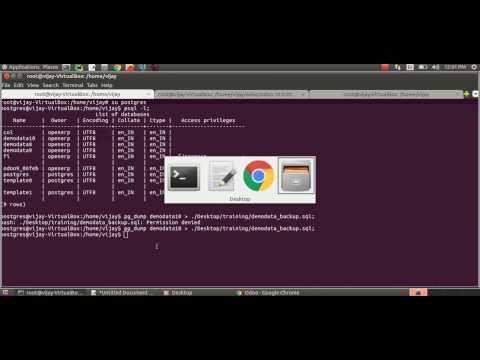
Found 45 images related to drop database postgres command line theme

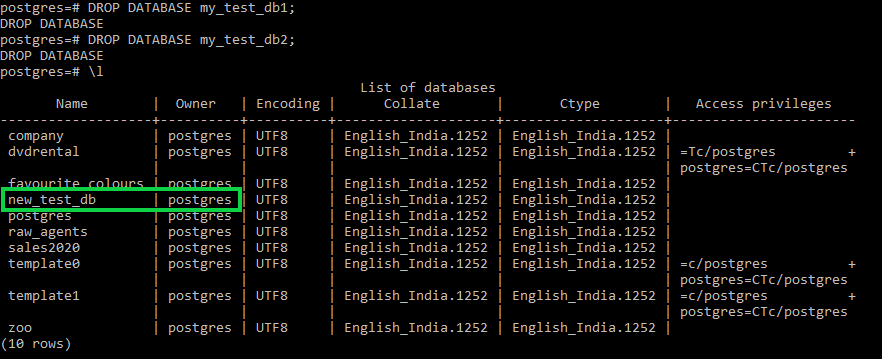
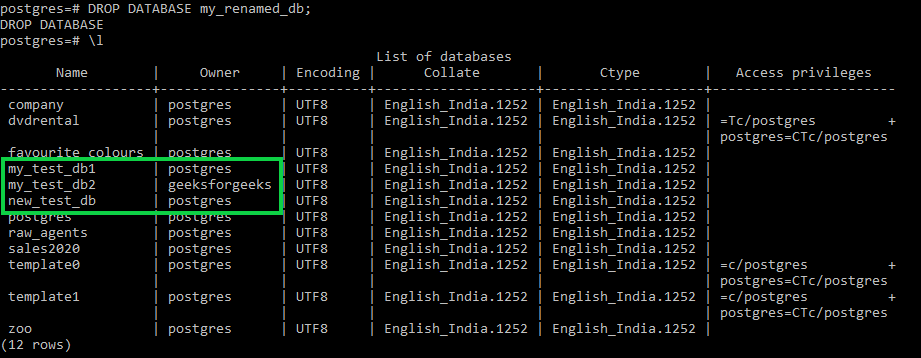
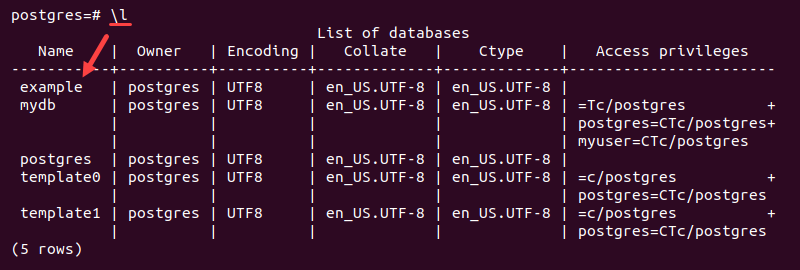


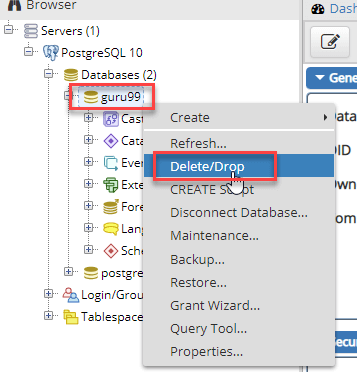

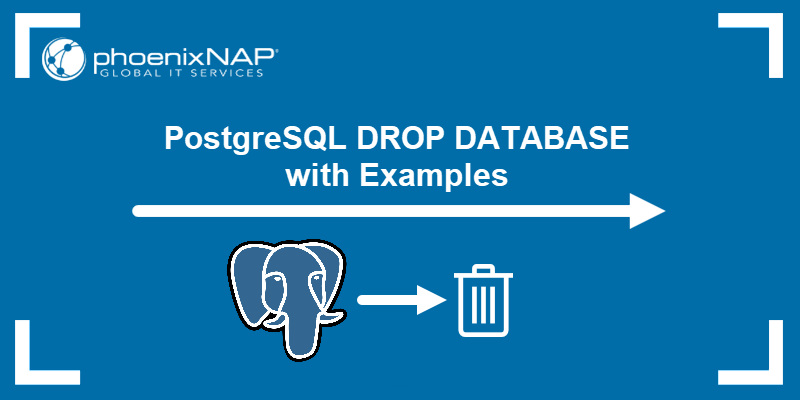
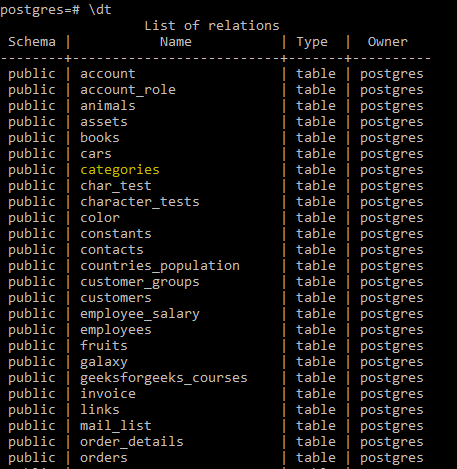
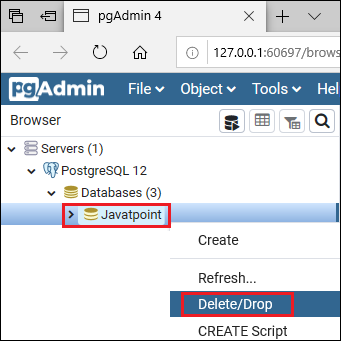



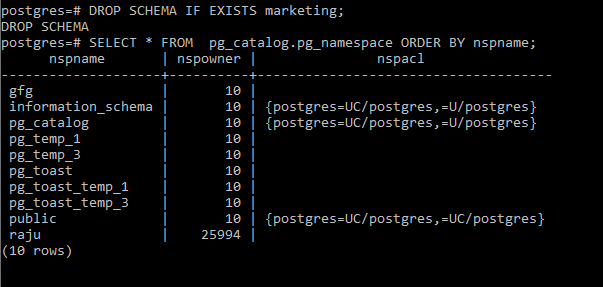
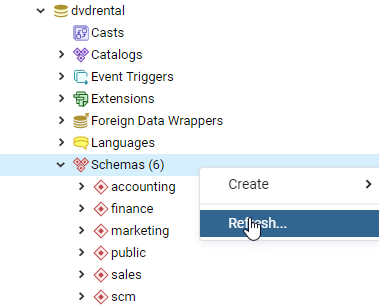




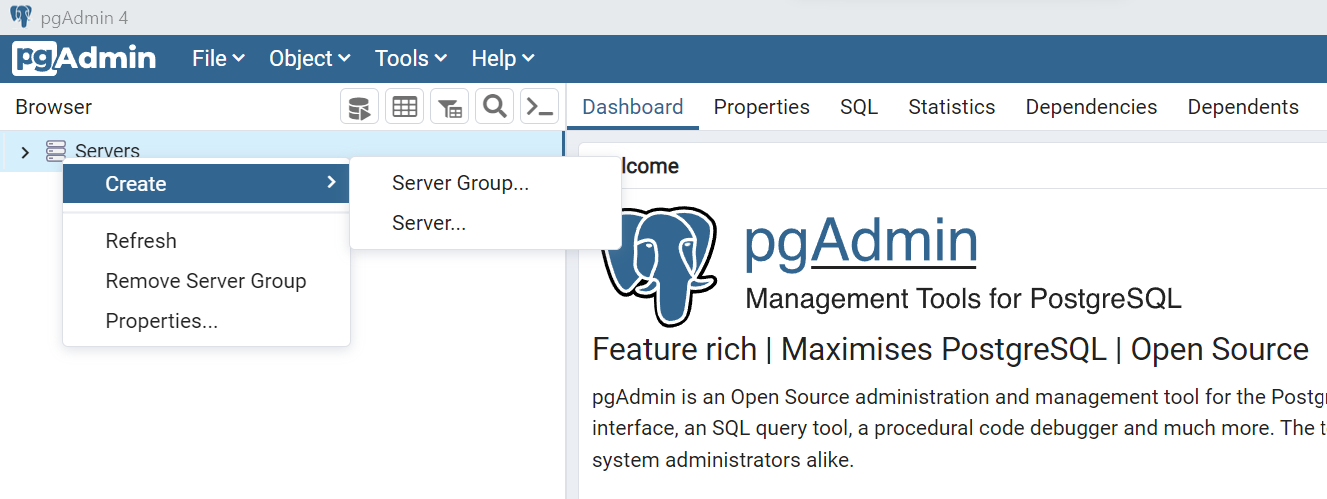
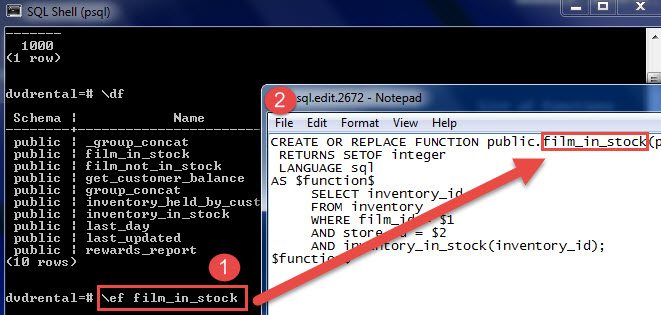












![PostgreSQL] Xóa (Drop) database - VinaSupport Postgresql] Xóa (Drop) Database - Vinasupport](https://vinasupport.com/uploads/2019/08/PostgreSQL-Tutorial-Xoa-Drop-Database.png)








Article link: drop database postgres command line.
Learn more about the topic drop database postgres command line.
- PostgreSQL Drop Database with Examples {2 Methods}
- How to drop PostgreSQL database through command line
- PostgreSQL – DROP TABLE – GeeksforGeeks
- How to drop a table in PostgreSQL – CommandPrompt Inc.
- PostgreSQL TRUNCATE VS DROP VS DELETE – CommandPrompt Inc.
- Documentation: 15: 26.1. SQL Dump – PostgreSQL
- PostgreSQL DROP DATABASE
- Documentation: 15: dropdb – PostgreSQL
- PostgreSQL DROP/Delete DATABASE: PSQL Command …
- How to drop a database in PostgreSQL – CommandPrompt Inc.
- PostgreSQL – DROP Database – Tutorialspoint
- PostgreSQL Delete/Drop Database – Javatpoint
- How to Manage PostgreSQL Databases from the Command …